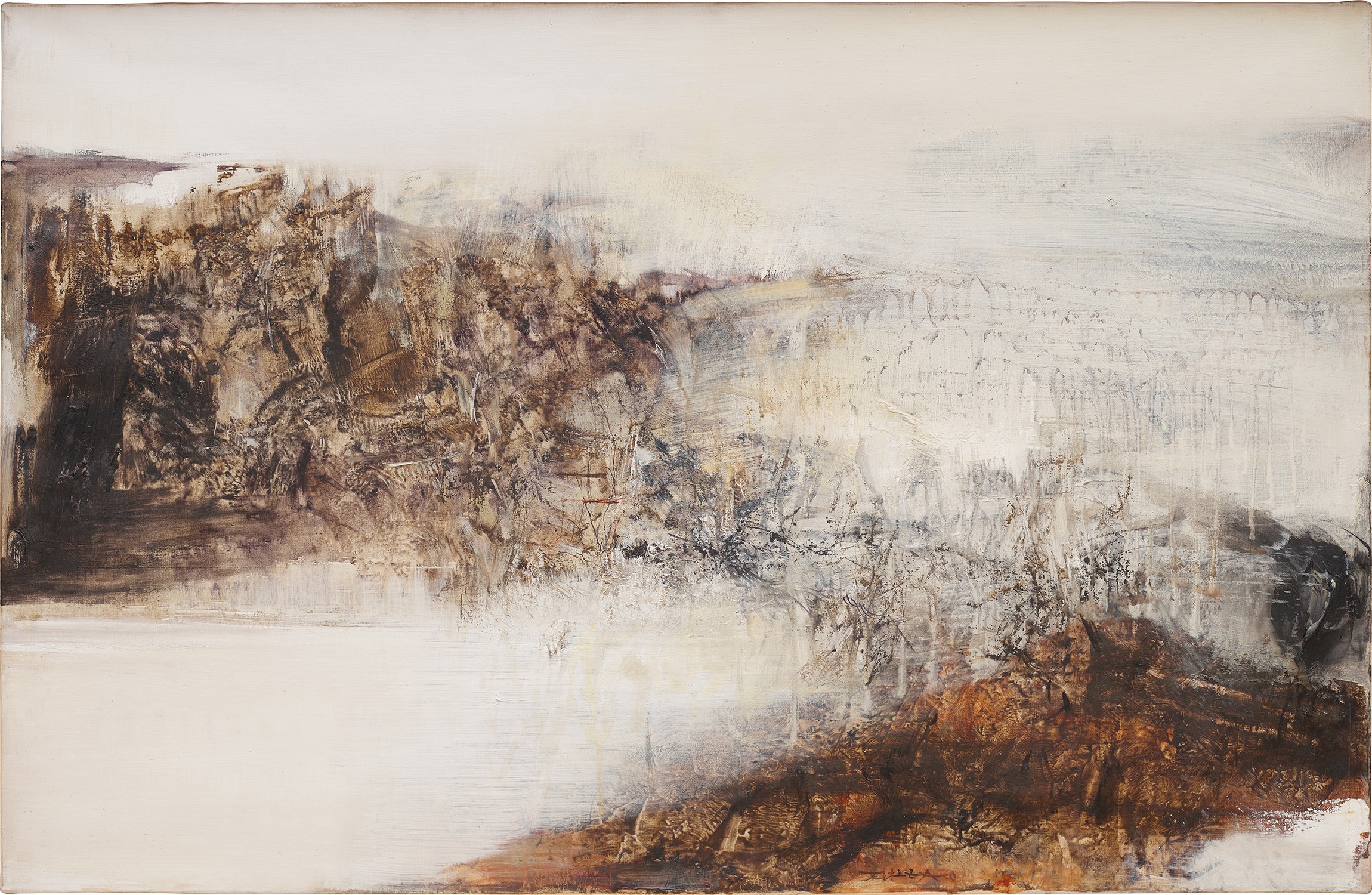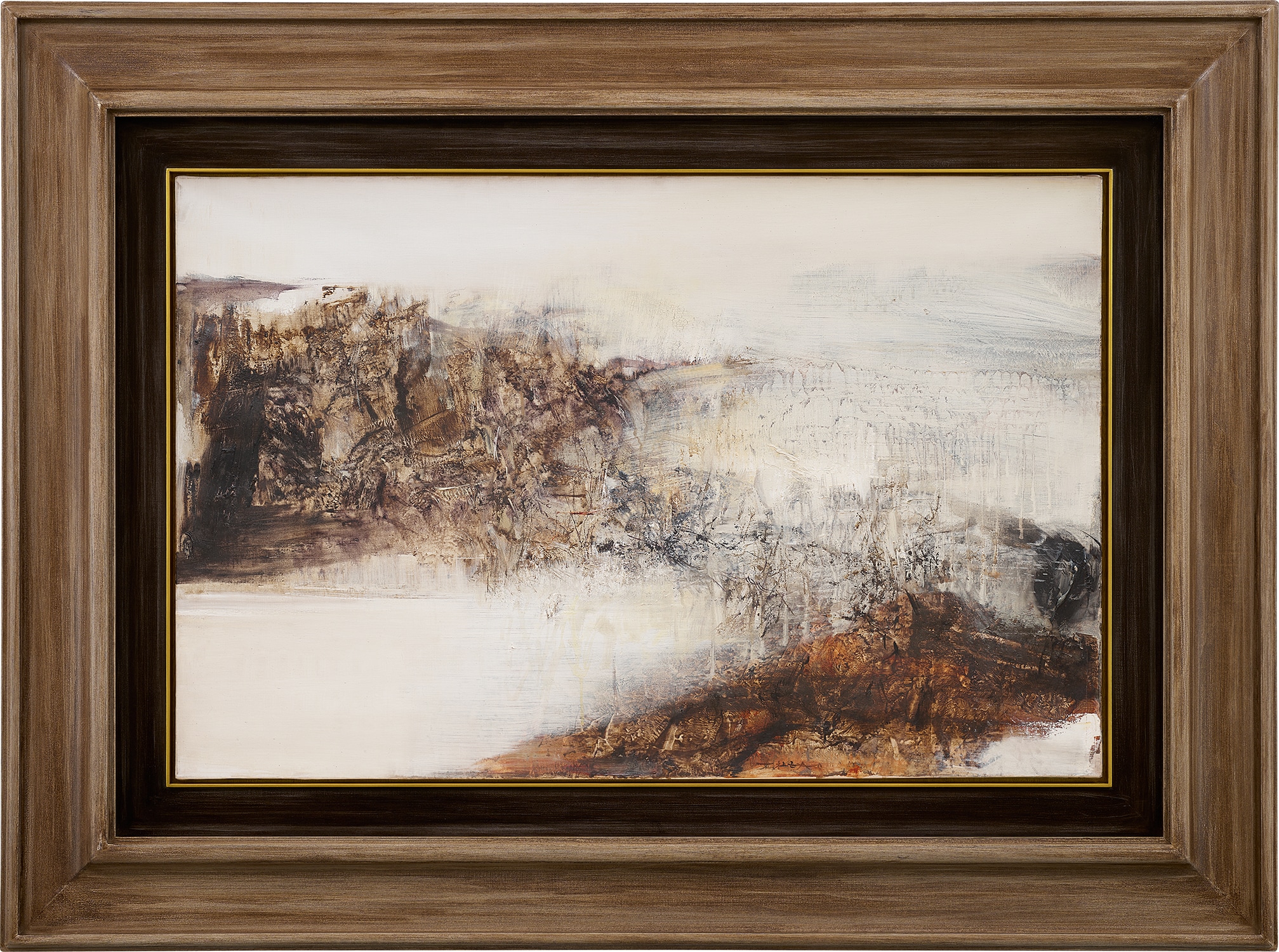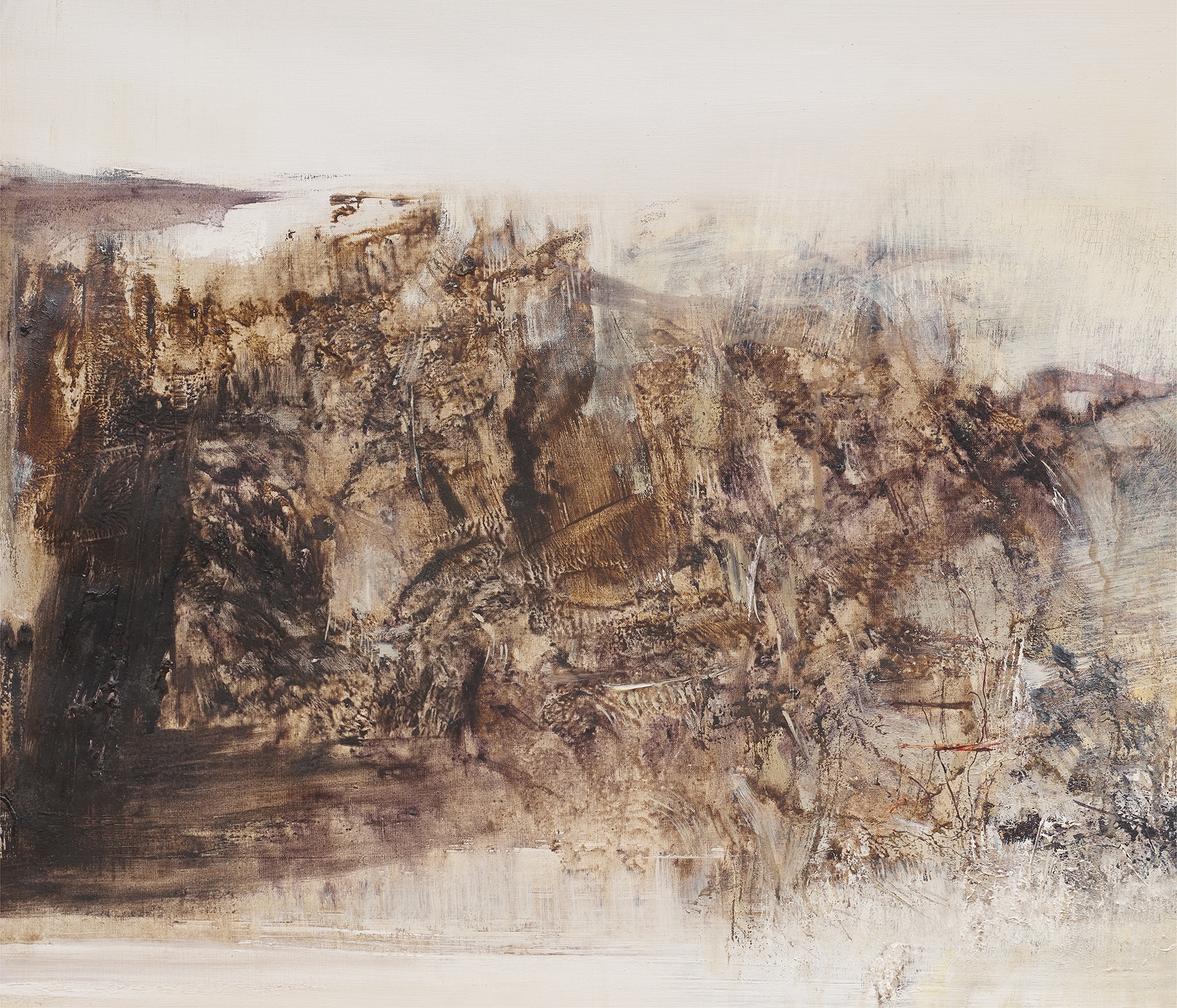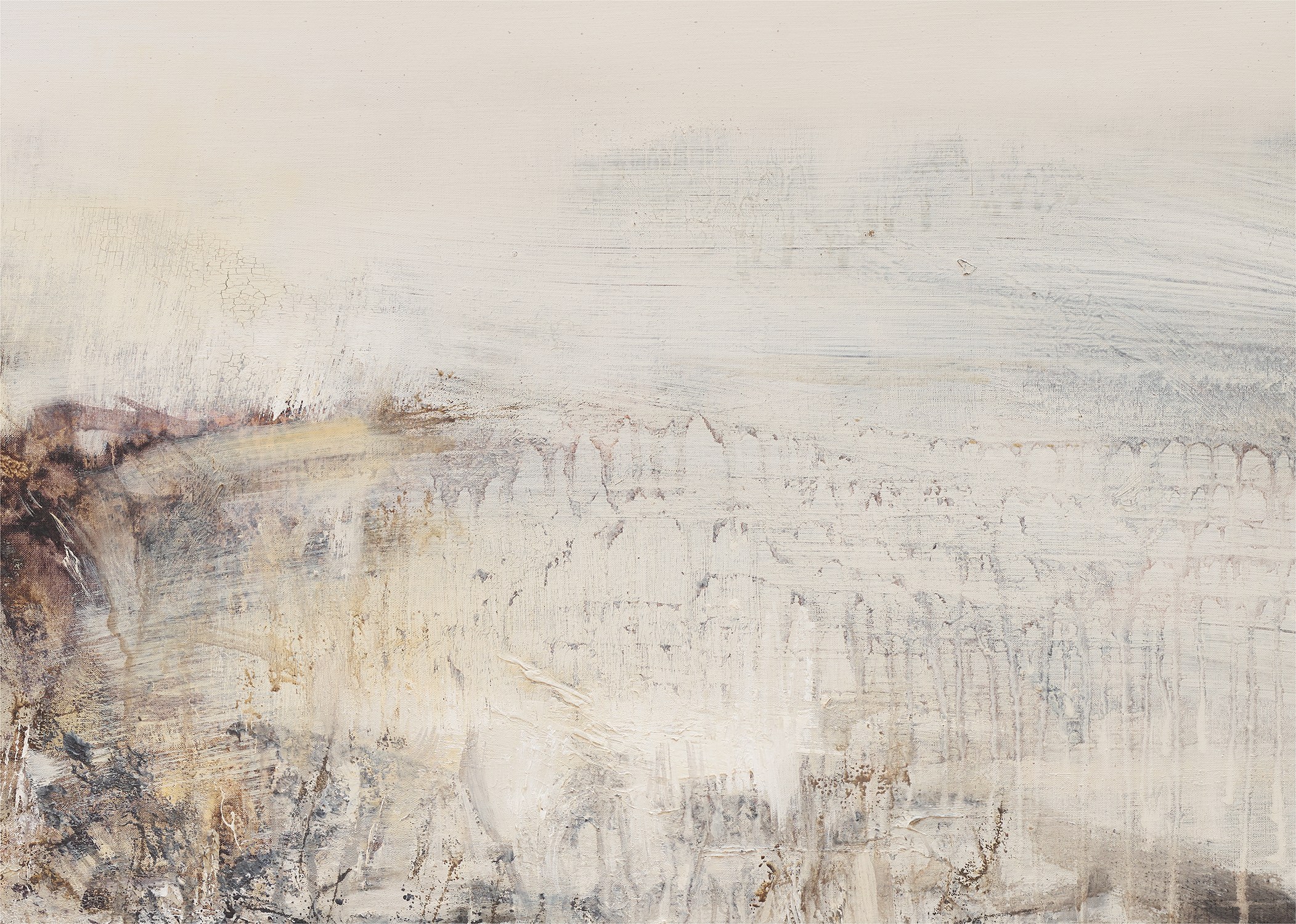











PROPERTY FROM THE COLLECTION OF SIN-MAY ROY ZAO
14✱
Zao Wou-Ki
14.10.69.
signed 'Wou-Ki [in Chinese] ZAO' lower centre; further signed and titled 'ZAO WOU-Ki "14.10.69."' on the reverse
oil on canvas
65 x 100 cm. (25 5/8 x 39 3/8 in.)
Painted in 1969, this work is accompanied by a certificate of authenticity issued by the Fondation Zao Wou-Ki. This work will be referenced in the archive of the Fondation Zao Wou-Ki and will be included in the artist’s forthcoming catalogue raisonné prepared by Françoise Marquet and Yann Hendgen. (Information provided by Fondation Zao Wou-Ki).